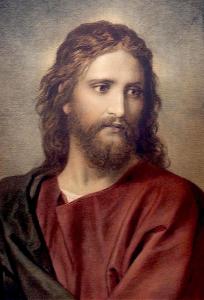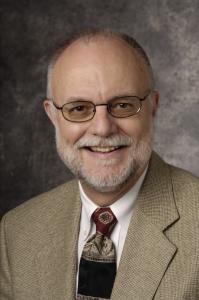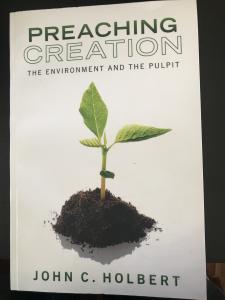 I mentioned some weeks ago that I was in the process of cataract surgery on my eyes. This, of course, is one of the gifts of old age, the gift that keeps on giving. I can now happily report that the surgical portion of the process is over, and was quite successful. I, after over 60 years of being the very definition of near-sightedness, (i.e. able to read anything without glasses, but unable to see anything clearly past five inches from my nose) am now a far-sighted person, able to see clearly without glasses street signs, building markings, and even individual leaves on trees. However, menus and books (along with computer jottings) require my newly purchased reading glasses, slick Foster Grants, acquired from a local drug store. I have yet to employ my new eyes in my church choir, where I will need to use my glasses to see the music, but will also need to look over the music to watch the conductor, who will, I fear, be something of a blur. Might there be the dreaded half glasses in my future? That remains to be seen.
I mentioned some weeks ago that I was in the process of cataract surgery on my eyes. This, of course, is one of the gifts of old age, the gift that keeps on giving. I can now happily report that the surgical portion of the process is over, and was quite successful. I, after over 60 years of being the very definition of near-sightedness, (i.e. able to read anything without glasses, but unable to see anything clearly past five inches from my nose) am now a far-sighted person, able to see clearly without glasses street signs, building markings, and even individual leaves on trees. However, menus and books (along with computer jottings) require my newly purchased reading glasses, slick Foster Grants, acquired from a local drug store. I have yet to employ my new eyes in my church choir, where I will need to use my glasses to see the music, but will also need to look over the music to watch the conductor, who will, I fear, be something of a blur. Might there be the dreaded half glasses in my future? That remains to be seen.
For those of you familiar with this cataract business, you may be asking why I did not go for the multi-focus lenses that would have obviated the need for any sort of glasses at all. The answer is two-fold: the cost of those things is prohibitive and is uncovered by my insurance, but more importantly I have glaucoma, and thus was not a candidate for those special lenses. Hence, I am now very far-sighted John. After 60 years of fumbling for my glasses first thing each morning and taking them off as my last act at night, I find myself still reaching up to mess with them, but soon discover that “them” have disappeared. As I watch TV, I do so glassesless, and though my computer does not recognize that as a word, I assure you that I do. It is a new world for me at 73, and I am quite literally seeing the world quite differently.
What could be better at the Christmas season? The entire story of Christmas is in fact one long paean to the call to see the world with new eyes. Before I launch into my theological ruminations, I want to be quite clear about this Christmas thing: I do not wish to argue about whether the tale is historical in any way, in a few ways, or in every way. After 50 years of such celebrations, held in the glaring light of my increasing knowledge of the biblical texts that announce the stories, I find most of the narratives to be primarily theological-historical. In other words, I do not wax nostalgic about the possibility of very bright stars (a NASA supernova?), or wise ones from the unnamed East (3? 7?, many?) walking their camels to a stable (?), a house (?), or shepherds overwhelmed with choruses of angels, not to mention the scandal of the unwed mother and her initially reluctant fiancée. Please note that I have conflated the tales of Matthew and Luke quite randomly as the church has done almost from the time they were written. This all to me is story, with a bare minimum of historical superstructure on which to hang the tale. Surely, there was a young couple and a baby, and the baby grew up to become Jesus, a prophet disliked by the religious authorities and murdered by the Romans for something or other, perhaps the most dangerous things eating with the wrong people and saying things few wished to hear. Yet, it is a story that has altered the world, has attempted to change the way we see that world.
Much of my life has been a near-sighted one, focused on things close by—my education, my career, my family, my safety. That state of my eyes well matched the state of my soul. Do not misunderstand me or make a too hasty judgment about what I am trying to say. There is in my sight nothing wrong at all with being deeply concerned about oneself. After all, does the great commandment not enjoin us to “love neighbor as one loves self,” with the possible implication that without self-love, there can finally be no lasting or significant love of neighbor? Near sightedness, in short, is no bad thing in and of itself.
But something is obviously missing from a total absorption in a near-sighted world. My newly created far-sightedness recalls for me a text from the Hebrew Bible that I have often touted as one that is a signature for the faith I hold, and yet may have been for me more an ideal than a reality. Listen again to that winsome poet of exile, 2-Isaiah, as he sings of a new way of seeing:
Do not remember the former things, Or consider the things of old.
I am about to do a new thing;
Now it springs up; don’t you see it?
I will make a road in the wilderness And rivers in the desert (Is.43:18-19).
There are no roads in the wastelands of Babylon and Israel in the 6th century BCE; it is bare and jagged rock, unmarked and endless sand, places where jackals and ostriches, the very definitions of wild creatures, cavort. And there are no rivers in the desert; there are barely hidden tiny pools, known only to the few who venture into the wilds. But YHWH proposes to change all that; there will be roads and there will be rivers. Don’t you see it? Frankly, my near-sighted self does not see it. I saw only waste and desolation, tohubohu, that state of the earth in Genesis 1:2 before the far-sighted God began the work of creation. I saw only Roman power and rigid religious hegemony before God sent the baby, “mewling and puking in its mother’s milk” in Luther’s trenchant phrase. I needed my far-sightedness to match that long view that God has always provided to those with eyes to see.
The tale of Christmas is one of new eyes to envision the new things of God, roads and rivers and babies. I pray this Christmas that my new eyes will become genuinely new in their ability to see all the more clearly what the far-sighted God may be about in a world too often captured by near-sighted self interest. Joy to the world, the babe is come! Let earth truly and clearly see the one who is their true monarch, their loving ruler, their genuine Emmanuel.
(Images from Wikimedia Commons)











